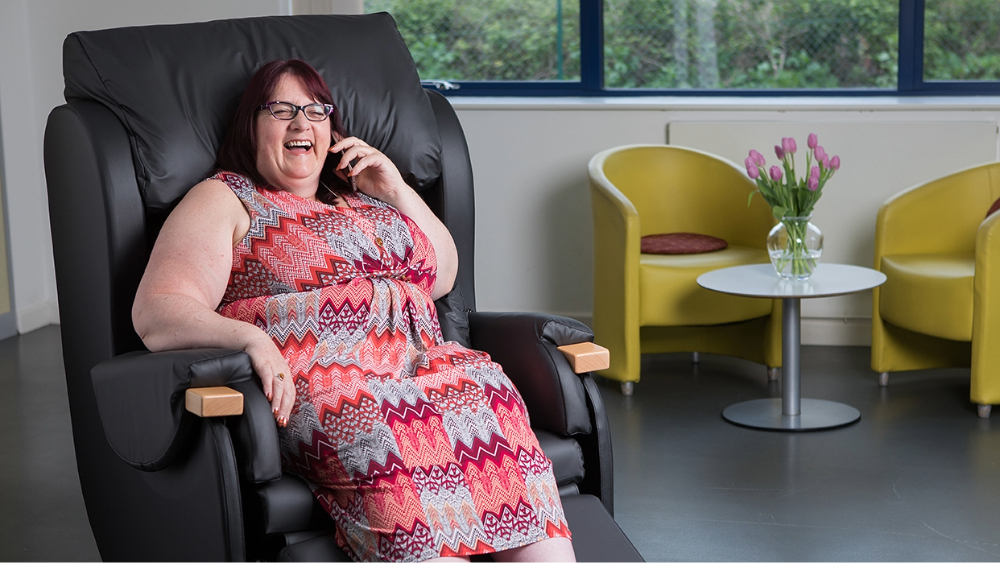The Role of Carers and Families in Postural Care
Many people who require postural care rely on others for support. Those other people may be family, friends, paid carers, personal assistants or support workers. These support personnel play a vital role in the daily life of the people we work with, whether that’s because they meet personal care needs, provide advocacy support or facilitate independent living. In whatever capacity that support person operates, they may also have a responsibility for safeguarding posture. Whether that is being responsible for hoisting and positioning of the individual, placement of lying supports, use of a postural armchair or routine re-positioning over a 24-hour period.
Once the assessment and provision of postural care devices is completed, it is not the therapy staff who are there day to day, ensuring that the individual is correctly positioned, that their postural supports are appropriately placed and that recommendations for postural care are adhered to, it is their care team and family.
Carers have reported a lack of training and guidance in postural care[1], which impacts their own health and influences the effective usage of postural support devices[2]. Lack of training for carers has also been attributed to poor positioning for the individuals being cared for, resulting in reduced functional abilities[3].
Carers have also raised concerns about the potential to cause harm if supports are not used correctly[4] and this is a valid concern, which must be addressed by therapy staff during the process of assessment and provision of postural devices. If carers and families are not confident to use these devices, they will be less likely to apply them correctly and this could lead to expensive equipment going to waste, being used incorrectly and/or risks to the individual requiring postural care.
It is therefore essential that we provide training and support to all those involved[5]. This could be in the form of physical demonstration and instruction, a recorded video that can be referred back to or a written instruction manual (or indeed all of the above!). Photographs can be helpful as a reminder of the correct configuration of postural supports, particularly if there are multiple accessories or items that require specific positioning. Use of positioning charts to outline particular points of reference (e.g. shoulder in line with the top of the back support, direct position of lateral supports) can be a helpful reminder and visual tool, particularly in multi-care environments.
Use of postural care equipment may also require regular review to ensure its correct configuration and to provide ongoing support to the care team implementing its use. Carers and families must feel competent and confident in positioning and use of postural devices to ensure their success, therefore, training is crucial. Having an understanding of the therapeutic goals of positioning, what is trying to be achieved and why each item is used will seek to increase the success rate of proper use because when we have a clear understanding of the reasoning behind an action or decision, we are more likely to follow through and do it. The use of an integrated care pathway has been reported to improve postural management through improved teamworking, training for families and carers, as well as taking a more proactive and preventative approach[6].
At CareFlex, all assessments are tailored to the individual and their specific needs; this includes involvement of their carers and family. When seating is provided, a thorough demonstration of the features of the seating is given, as well as guidance on positioning techniques to ensure optimal use of the equipment. To find out more, contact us to book an assessment: https://www.careflex.co.uk/free-assessment-ordering/seating-assessment/
Written by our guest blogger, Lauren Osborne, an Independent Posture & Wheelchair Specialist Occupational Therapist.
[1] Stinson, M., Crawford, S. and Madden, E. (2021) ‘Current clinical practice in 24-hour postural management and the impact on carers and service users with severe neurodisability’, British Journal of Occupational Therapy, 84(6), pp. 355–365. doi:10.1177/0308022620944739.
[2] Hanley, R. and Collett, J. (2025) ‘The positioning information that should be provided to caregivers of adults with a physical disability on supply of custom-contoured seating, a Delphi study’, Disability & Rehabilitation: Assistive Technology, 20(2), pp. 423–431. doi:10.1080/17483107.2024.2382287.
[3] Stinson, M., Crawford, S. and Madden, E. (2021) ‘Current clinical practice in 24-hour postural management and the impact on carers and service users with severe neurodisability’, British Journal of Occupational Therapy, 84(6), pp. 355–365. doi:10.1177/0308022620944739.
[4] Polak, F., Clift, M. and Clift, L. (2009) Buyers’ Guide. Night time postural management equipment for children CEP08030.: London: NHS Centre for Evidence-based Purchasing.
[5] Stinson, M., Crawford, S. and Madden, E. (2021) ‘Current clinical practice in 24-hour postural management and the impact on carers and service users with severe neurodisability’, British Journal of Occupational Therapy, 84(6), pp. 355–365. doi:10.1177/0308022620944739.
[6] Humphreys G and Pountney T (2006) ‘The development and implementation of an integrated care pathway for 24-hour postural management: a study of the views of staff and carers’, Physiotherapy, 92(4), pp. 233–239. doi:10.1016/j.physio.2006.06.002.




